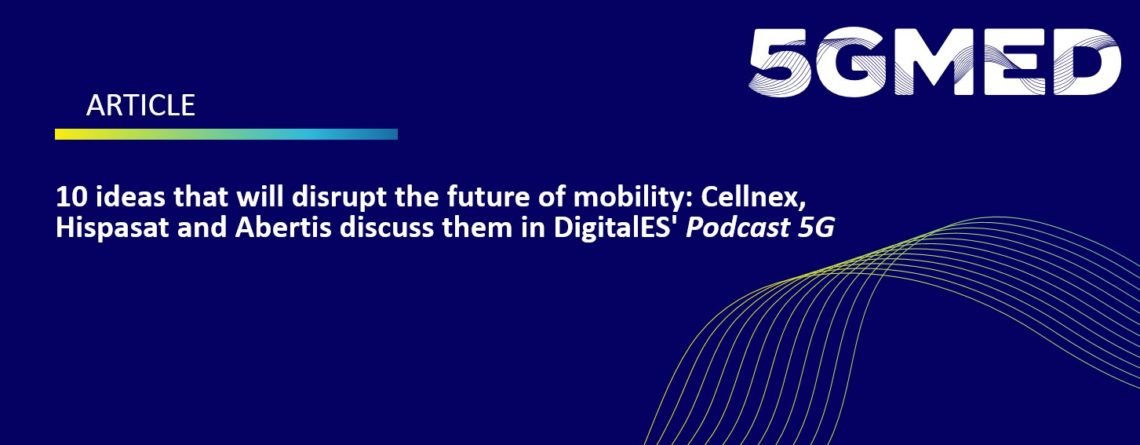10 ideas that will disrupt the future of mobility: Cellnex, Hispasat and Abertis discuss them in DigitalES’ Podcast 5G
The transport network in the Iberian Peninsula is like a spiderweb that structures the territory through railways and high-speed roads. For many years, Spain has been a reference country in physical infrastructures, and now it is also one in digital and telecommunications infrastructures. But both, physical and digital, have followed different paths.
Now imagine for a moment that these infrastructures come together, and that the tracks and highways, and the trains and vehicles, become new communication nodes. We could connect many territories to which high-speed Internet still does not reach, but we could also already dream of authentic autonomous vehicles. We could also project the end of most automobile and transportation accidents, and we could usher in an unimaginable market for new entertainment products.
All this could be done at a European level, so that when you cross the border with France, or with Portugal, the connection cannot be interrupted for a single second. And that is exactly what 5GMED is developing with 5G technologies in the Mediterranean Cross-Border Corridor between Figueres (Spain) and Perpignan (France).
5G, the land transportation revolution
Raül González, Senior Product Manager at Cellnex Telecom, 5GMED’s coordinator; José Luis Serrano, Innovation Manager at Hispasat; and Xavier Daura, Innovation Director at Abertis, gathered to discuss at Podcast 5G from DigitalES how 5G is disrupting land transportation and how 5GMED is contributing to this mobility revolution.
Their debate is in Spanish, but here you have the 10 main ideas you should know:
- 5GMED main objective is to assure continuity in the 5G connectivity to allow the creation of new services in connected cars and trains facing all the challenges of cross-border scenarios when changing countries.
- For that, 5GMED is working on four use cases: remote driving, road infrastructure digitalisation, future railway mobile communications, and follow-me infotainment.
- This will become a reality for the European citizens in 8-10 years.
- 5G architecture is flexible and introduces new technologies, such as edge computing, that allows the development of unique architectures that facilitate synergies between cars and trains.
- The satellite guarantees a continuous, safe and complete connection in areas that other technologies cannot reach thanks to its ubiquity.
- 5GMED mixes and hybridises several technologies to improve transport services and security: CV2X, Cellular V2X, satellite, and many more.
- 5G networks are a facilitator for operators to obtain traffic data to decrease traffic accidents and save costs. In fact, traffic accidents could disappear.
- Regulation is one of the main challenges of connected mobility, specially regulation about data ownership and management.
- 5G directly connected to satellite will allow to close the digital gap and assure connection all over the world for all users.
- In 10-15 years autonomous vehicles will be common in our streets and roads. Vehicle property won’t make sense and we will use vehicles more efficiently, only when needed, and new services and business opportunities will appear. Mobility will connect people, and electric mobility will become a normality.
If you want to challenge your Spanish skills, you can listen to the podcast below:


